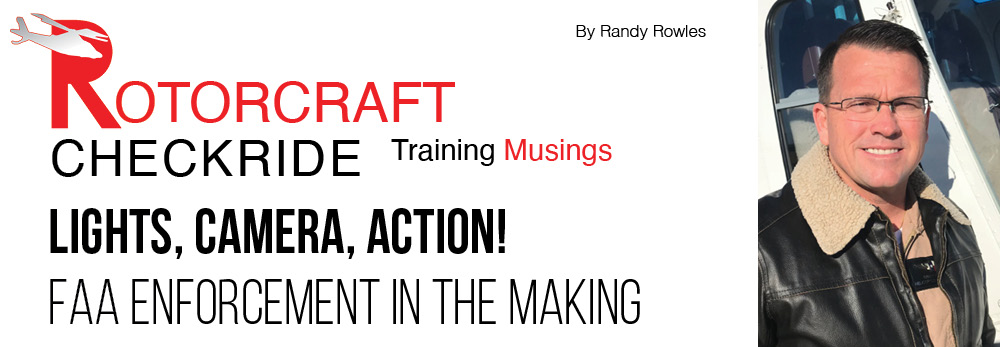|
Apr
26
2021
|
|
Posted 4 years 261 days ago ago by Admin
|
|

Lately, I am seeing an increased number of videos voluntarily posted to social media sites that clearly show pilots conducting flights contrary to FAA regulations. For this article, I am going to focus my examples within the business of helicopter hog hunting.
Recently, I was watching a video of a pilot conducting low-level helicopter hog hunting activities. This alone is not an earth-shattering event. However, it was only a matter of months prior that I had conducted a private-pilot helicopter certification exam for this pilot in the same helicopter being flown in the video. What made matters worse was the video’s purpose; it was a marketing ad for a commercial hog hunting company. A simple check of their customer comments on the company’s website made it easy to validate that the pilot I had recently certified was providing revenue flights to paying customers.
My decision to engage the FAA regarding such actions would be based upon a simple moral act: Would the pilot be honest with me? In this case, he immediately admitted the wrongdoing and assured me this would not happen again.
Within the same video previously mentioned, a passenger recorded a flight segment, which started at one location and after about 5 minutes of flight time ended at another location for a pre-planned luncheon for the group. In this case, the flight was clearly a Part 135 operation. The issues with this video related to Part 135 operations: no briefing, no checklist usage, flight well below the minimum set in 135.203(b) of 300 feet (agl), etc. Of course, this operator does not hold a Part 135 certificate, so the entire act is a violation.
If conducting flight operations contrary to FARs is not enough, several videos showing clear damage to an aircraft while in-flight meet both FAA and NTSB definitions to be considered an aircraft accident and are shown with post-incident commentary by the pilot. In many cases, the comments from the pilot make the occurrence seem like a badge of honor within their industry segment’s pilot ranks.
One such incident involved a shotgun blast to the end of a main rotor blade while in a steep left turn. The video replayed this event, in slow motion, where you clearly see the end of the main rotor leave the aircraft in concurrence with the firing of the shotgun. Essentially, this was considered worthy of social media “likes” and posted accordingly. When I engaged the company owner about the video, his answer was simply, “This happens once and a while.” Although this incident is recorded and released because it was “cool,” someone failed to notify the regulators; that’s a clear violation of regulatory guidance based upon the definition of an “Accident Aircraft.”
Social media provides an opportunity for companies to highlight the quality and uniqueness of their operations to entice potential clients and opportunities. The fact that helicopter industry professionals are engaged in activities blatantly contrary to regulations is bad enough, but recording such events and posting credible evidence of such events reflects ignorance and blatant disregard for safety and regulatory oversight.
Heed my warning: the FAA is watching too!
About Randy:
Randy Rowles has been a FAA pilot examiner for 20 years for all helicopter certificates and ratings. He holds a FAA Gold Seal Flight Instructor Certificate, NAFI Master Flight Instructor designation, and was the 2013 recipient of the HAI Flight Instructor of the Year Award. Rowles is the owner/president of Helicopter Institute.
Visit Helicopter Institute's website for more information
Website: www.helicopterinstitute.com
YouTube Channel: https://www.youtube.com/channel/UCt4y...